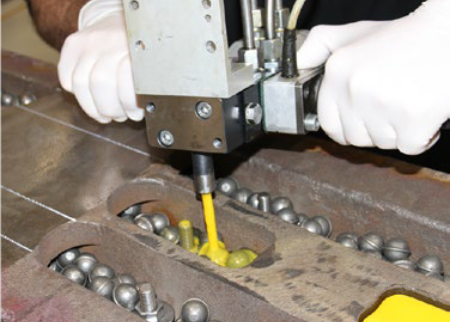The first prototype was tested under laboratory conditions. It was recognized that the introduced attenuation begins to take effect from about 100 Hz, but the greatest differences can only be observed from about 700 Hz.
Together with ÖBB, the first field test was started in July 2021 in Pfaffstätten, Lower Austria on the Südbahn line and a transfer point was equipped with test frogs. Turnout frogs of the type "60E1 500 1:12" were used and damped in turnouts W1 and W4. Turnouts W2 and W3 did not receive any damping of the turnout frogs and serve as a reference in order to be able to directly compare the differences. The measurements were to be on passenger trains only. The first measurement took place in September 2021, with all turnout frogs still in optimal condition in their overflow geometry. The following graphics show the measurements of the "Railjet" train type.
